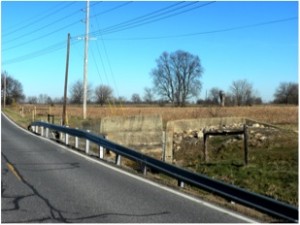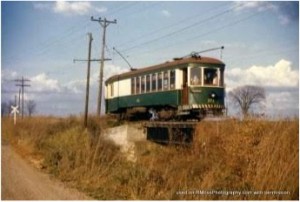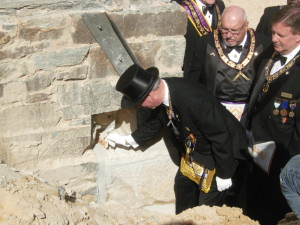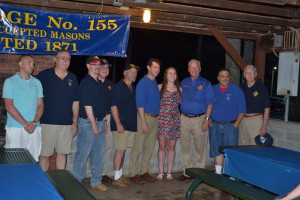Part 2 of 3
Submitted by Joan Bittner Fry
The Sabillasville Charge was formed in May 1886 by detaching St. John’s congregation of Sabillasville and Jacob’s from the Mechanicstown Charge. Jacob’s congregation (originally Herbach’s) was with the Emmitsburg Charge after 1842 until 1853, when Jacob’s and Millerstown were made into a charge. Rev. A. B Stoner, pastor at Mechanicstown, was instructed to supply the charge until a pastor could be secured. Classis granted charge sustentation to the amount of $200 for a year. The charge received the sum of $600 for its interest in the parsonage in Mechanicstown.
Rev. E. Welty, M.D., was called during the year 1886, but left before he could be received into Classis or installed.
At the annual meeting of 1887, James W. Meyer was called and was ordained and installed June 12 of that year. He was authorized to organize a new congregation in the vicinity of Blue Ridge Summit, Pennsylvania, if possible, as Classis realized that some new material must be found if the charge was to survive. The territory around Blue Ridge Summit and Highfield was rapidly being developed as a summer resort and appeared to be a promising place for a congregation.
In November 1888, Meyer resigned, and on that date, Classis cited him for trial. Meyer was tried on January 20, 1889, found guilty of immorality and suspended. He later made several unsuccessful requests for reinstatement.
In 1889, Rev. H. W. Hoffmeier, who had supplied the charge on several occasions, was elected but declined the call. The charge was vacant until September 1891, when Rev. James R. Lewis became pastor of the Sabillasville Charge. Lewis resigned in May 1896 and was succeeded in August 1896 by Rev. Cyrus Cort, whose service ended in 1900.
The charge was then vacant for several years.
During these years, the affairs of the Highfield Congregation occupied much of the time and attention of the pastors and of Classis. In 1891, a special committee on the interests of the Sabillasville Charge recommended the building of a church at Highfield, making it the center of the charge. It was reported that an option had been taken on a lot to cost $300, toward which the sum of $167 was already on hand. Classis instructed the committee to complete payment on the lot, to organize a congregation at Highfield, and to secure a pastor for the charge. Classis promised charge sustentation for the first year to the amount of $300 as soon as a pastor could be called.
As soon as Pastor Lewis came, he proceeded, under the instruction of Classis, to take possession of the lot, toward the purchase price of which Mr. Wantz, from whom the lot was purchased, contributed $100. The pastor and the trustees were also instructed to have plans prepared for a building to seat 250 or 300, the cost not to exceed $2,500.
At the session of 1892, it was reported that the building was being erected and that the cornerstone would be laid May 8. Classis voted to charge sustentation of $500 for the year, and instructed the trustees to borrow $1,600 toward the cost of the building.
After the resignation of Dr. Cyrus Cort in June 1900, the Sabillasville Charge was vacant until May 1903, when Rev. Charles A. Bushong was called to the pastorate. Bushong resigned January 1906. The next pastor, Rev. Milton H Sangree, began his service in the charge in May 1906.
In May 1909, part of St. Stephen’s lot at Highfield was sold for $100. Sangree resigned in January 1910, and the charge was vacant for three years. During the vacancy, a committee was appointed by Classis to study conditions in the community with a view of strengthening the charge by the addition of other congregations if possible.
A proposal made to the Lutheran Church in Sabillasville to bring about a union of the two denominations in the community was refused by the Lutherans. Nor was there an opportunity for a union with any other congregations of the Reformed Church. While the charge was vacant, Rev. J.B. Shontz served the charge as supply pastor during the years 1911 and 1912. In July 1912, Rev. M.L. Firor became the pastor.
At the annual session of 1914, the Highfield Congregation asked for a deed to their church property. The request was granted on condition that the congregation pay to the pastor at least $100 a year for five years, above the regular salary. The condition was accepted, and it was reported in 1918 that the full amount had been paid.
During his pastorate at Sabillasville, Firor gave a great deal of pastoral service to the patients of the Maryland State Sanatorium near Sabillasville. The service was so acceptable and evidently so necessary that Classis proposed that he be appointed chaplain to the sanatorium at a salary of $840 a year, of which amount Classis agreed to pay $240 if the Baltimore Federation of Churches and the Protestant Churches in Maryland would furnish the balance. The Baltimore Federation was not willing, however, to assume any financial responsibility, and the whole matter was dropped when Firor resigned the pastorate of the Sabillasville Charge September 1919 to accept a call to Burkittsville.
Rev. Walter D. Mehrling, the next pastor, began work in the charge June 7, 1920, but remained only until September 26, the same year. The charge was then vacant for several years.
In 1924, Jacob’s congregation celebrated the 100th anniversary of the erection of its church, although the congregation was organized some years before 1824. Dr. F. B. Bahner served as Supply Pastor for the charge from 1922 until 1927. In July 1927 at a special meeting it was reported that the affairs of the charge were at a low ebb; that there had been no pastor for seven years, and that no elders or deacons had been elected for more than six years. But a brighter day was in prospect.
Classis secured the promise of the Board of Home Missions to enroll the charge as a mission, and an every-member canvass was held after which the congregation pledged the annual sum of $800 for pastoral support and Classis promised an additional amount of $350, provided the Home Missions Board would give a similar sum.
On May 23, 1927, Rev. Wilmer H. Long began a successful pastorate. The charge began to pay the apportionment in full and in 1929 the pastor reported that St. John‘s Church at Sabillasville had been improved at considerable cost.
Long resigned on December 31, 1929, and was succeeded by Rev. Claude H. Corl, who began his pastorate May 1930 to continue until December 1936.
From 1937 to 1940, Rev. Darwin X. Gass accepted a Call to the Sabillasville Charge. In 1937, a parish hall was erected in Sabillasville at a cost of $2,000.
Rev. Edwin L. Werner served the Sabillasville Charge from 1940-1947 (Rev. Claude Corl returned to the Sabillasville Charge in 1947 after serving in the Army Chaplain Corps in the African and European Theaters. The second time, he served from 1947 until his retirement in 1974.)
From History of Maryland Classis of the Reformed Church in Maryland by Rev. Guy P. Bready (1938)
The Sabillasville Charge (Jacob’s, St. John’s, St. Stephen’s)
St. John’s Elders; C.B. Harbaugh, D.A. Wagaman, Thomas Wagaman, Howard R. Wagaman, Lester Bittner. Deacons; Roy C. Pryor, Paul Wagaman, Harold Bittner, Edgar McClain, and Paul Fry.
St. Stephen’s Elders; C.C. McGlaughlin, Victor L. Pryor, William Happel and A.L. Happel.
Deacons; John A. Zimmerman, Lawrence Walter, Theodore Zimmerman, S.P. Bittner, Charles E. Keckler, and T.O. Eyler.
Jacob’s Elders; George E. Harbaugh, and Jerry Miller.
Deacons; Ernest Gladhill and Paul Gladhill.

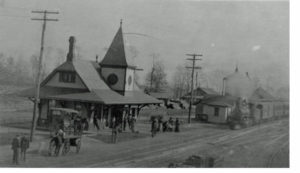 Thurmont’s stop on the Western Maryland Railway makes up only a paragraph in the history of the railroad. For Thurmont, however, it was a major event that not only helped shape the town’s future but also gave it its unique name.
Thurmont’s stop on the Western Maryland Railway makes up only a paragraph in the history of the railroad. For Thurmont, however, it was a major event that not only helped shape the town’s future but also gave it its unique name.